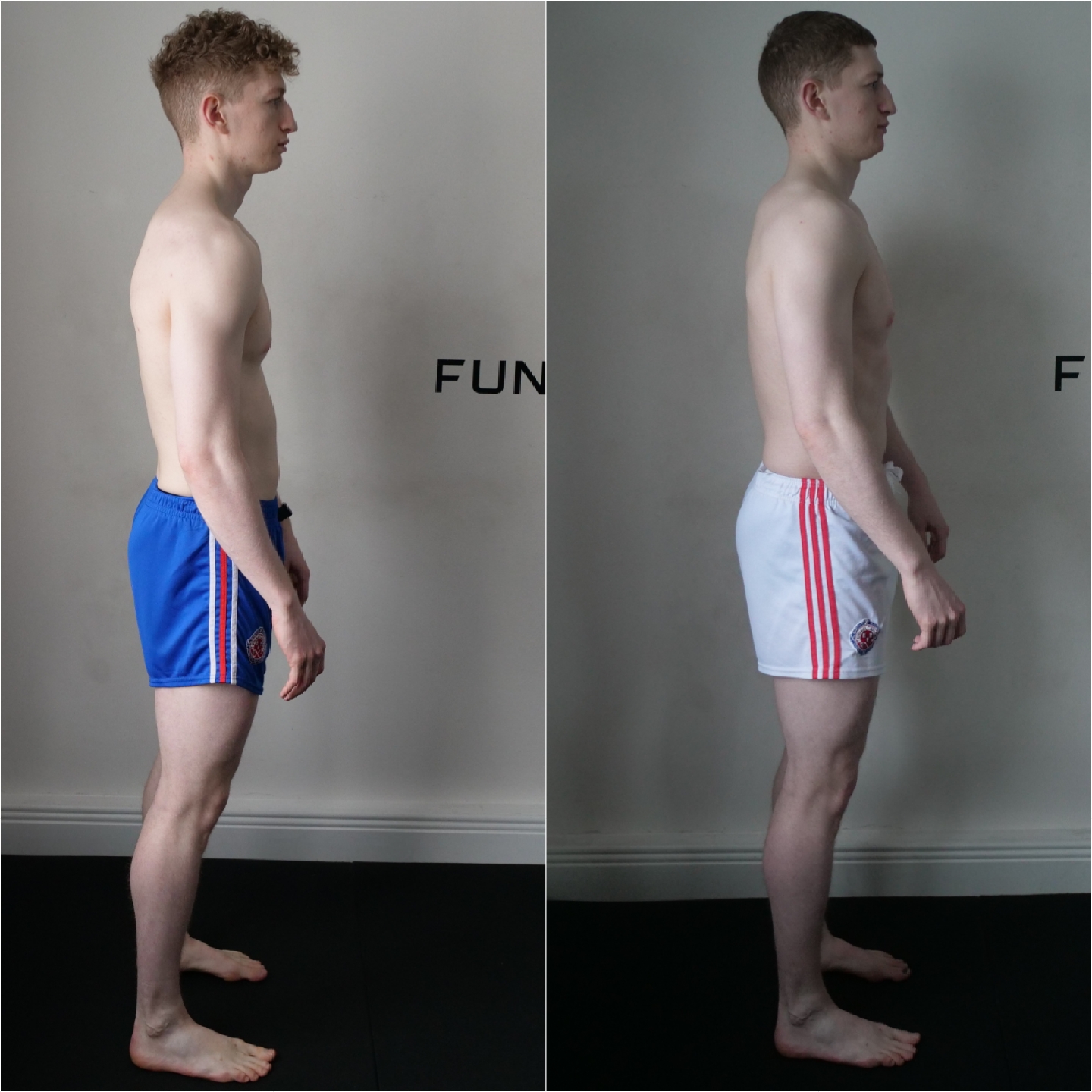
04 Aug Back Pain in GAA Players: Improve Posture, Enhance Performance
Back pain is becoming a more common issue among GAA players in Ireland, with studies showing that 30% – 50% of athletes will experience back pain at some point during their career. It’s difficult to suggest why, but it seems modern training practices seem to be a big contributor.
Why the Sudden Increase?
GAA players at a high level have always been exposed to high training loads, and even at the highest level (county), they still have to maintain fulltime jobs and train like professional athletes all at the same time. No easy task. However, something that has increased hugely in the last two decades is the amount of strength work done, and time spent in the gym by these athletes.
This is evident when you watch the game. It has changed in nature to suit and take advantage of the athleticism it’s athletes are starting posses. This has resulted in a game that is as exciting as it’s ever been to watch, but are some of the training methods used in order to get it there causing more problems as a by product for the players?
Traditional Strength Training
Some of the traditional lifts done regularly to improve strength create a risk to reward ratio is too far tipped towards risk and not enough towards benefit when you examine them more deeply. If someone has asymmetries and imbalances already in their body, loading them with the likes of squats, bench-press, and deadlifts will only exacerbate the issues and hinder the way they move over time.
You couldn’t argue that these movements are totally useless, but if we look at things in terms of how useful they could be, these lifts are not it. They will make you stronger at the lifts themselves, but likely cause you to have worse posture and eventually moving capacity. In the case study below, Karl had spent a lot of time doing these lifts and his posture tells the story, Though he was very strong in the lifts themselves, the stronger he got the more compressed his structure got, and this ultimately is what led him to pain.
Having such an opinion on these lifts used to be seen as quite controversial, but the industry is starting to realize that they are not helping people to move better. In fact there is almost no actual evidence that these lifts make people more athletic in real terms. Athletes with very high levels of function in their body seem to be more resilient to the lifts and may get a minor benefit, but make no mistake, they are not the athletes they are because of these ways of training, but rather in spite of them.
Functional Patterns
At Functional Patterns our goal is to improve strength and athleticism in everyone we train, whether and athlete or an average joe. We do it in a way that mitigates risk of injury, and actually improves someone’s posture rather than compounding it with heavy vertical loading of the body. We do this by taking the focus away from how “strong” we can get with arbitrary lifts in the gym, but by getting “strong” in terms of the functions our body as been designed to execute over millions of years.
Creating the right neuromuscular and fascial efficiency first, and then loading it appropriately is what improves actual relative strength. Measuring and using gait and posture as our reference for success rather then weight on a bar is also crucial in keeping us on track and understanding the impact of what we are doing. There are plenty of blogs on this site going into the specific details much more so do look at those for more info
Case Study
Karl is a GAA football player who came to us due to pretty constant QL (Quadratus Lumborum) and low back discomfort when playing GAA or even doing something like driving or sitting at a desk all day. This was a 3/10 almost constantly and could get to a 6/10 after sports. He felt some hip discomfort and tightness on and off too, and his hip would often feel “gunked up” with 3 or 4/10 pain sometimes after football.
None of these issues were totally sidelining him from playing for long spells, but the symptoms were affecting his ability to play and his comfort day to day. He may have to miss training sessions occasionally and felt he was not performing as well as he could on the pitch. At this time he had been training traditionally doing heavy compound lifts like deadlifts and squats as part of his strength and conditioning.
BEFORE: (May 2022)
- Kyphotic Posture
- Anterior Pelvic Shift
- Crushed Ribcage
- Depressed Shoulders
- Poor Core Pressure
AFTER: (Nov 2023)
- No Kyphosis
- Better Joint Stacking
- Expanded Ribcage
- Better Shoulder Position
- Improved Core Pressure
Karl initially came for a weekly session and was soon spacing them out to every two or three weeks. He was committed outside of our sessions and worked hard on his own. He felt much better on the pitch and his back pain totally disappeared. He had stopped the traditional Strength and Conditioning and still felt continuously stronger on the pitch. He used strictly Functional Patterns techniques to achieve these results, and after dropping heavy compound lifting was really able to make positive adaptations to his structure.